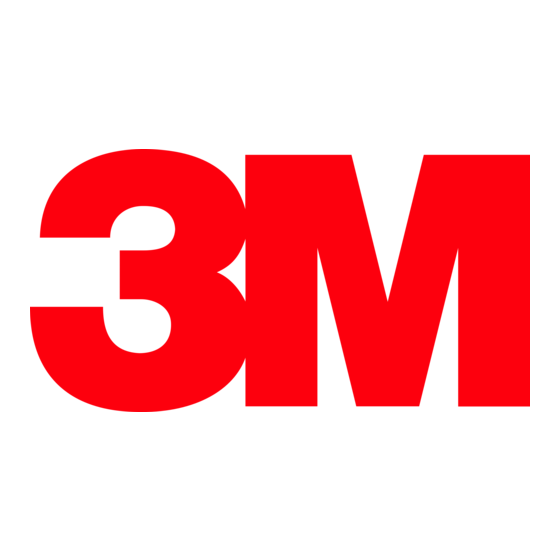3
Full Facepiece Respirator 6000 Series
GENERAL SAFETY INFORMATION
Intended Use
The 3M
Full Facepiece Respirators 6000 Series are NIOSH approved and designed to help provide respiratory protection against certain airborne
TM
contaminants when used in accordance with all use instructions and limitations and applicable safety and health regulations.
The Full Facepiece 6000 Series meets the requirements of the ANSI Z87.1-2010 standard for face and eye protection. These products help provide
limited eye and face protection against flying particles.
This product contains no components made from natural rubber latex.
This respirator helps protect against certain airborne contaminants. Misuse may result in sickness or death. For correct use,
consult supervisor and User Instructions or call 3M in U.S.A. at 1-800-243-4630. In Canada, call Technical Service at
1-800-267-4414.
These User Instructions provide information about facepiece use only. Important information is provided in the User Instructions with each of the
air filtration/supplied air systems that are NIOSH certified to be used with the 3M™ Full Facepiece Respirator 6000 Series. Failure to follow User
Instructions for the air filtration/supplied air systems being used may result in sickness or death.
Do not clean respirator with solvents. Cleaning with solvents may degrade some respirator components and reduce respirator effectiveness.
Inspect all respirator components before each use to ensure proper operating conditions. Failure to do so may result in sickness or death.
When in supplied air mode, your employer must provide breathing air that meets at least the requirements of the specification for Grade D breathing
air, as described in the Compressed Gas Association Commodity Specification G-7.1-1997 in the United States. In Canada, breathing air systems must
be supplied with air, which meets at least the requirements of CSA Standard Z180.1. Failure to do so may result in sickness or death.
In Brazil breathing air systems must be supplied with air, which meets ANSI Z86.1-1989/CGA G-7.1, Grade D breathing air.
USE INSTRUCTIONS AND LIMITATIONS
Important
Before use, the wearer must read and understand these User Instructions. Keep these User Instructions for reference.
Use For
Respiratory protection from certain airborne contaminants according to United States NIOSH approvals, OSHA limitations, in Canada CSA standard
Z94.4 requirements, applicable local government regulations and 3M instructions. In Brazil follow the Respiratory Protection Program of the Ministry
of Labor.
Do Not Use For
Do not use for concentrations of contaminants which are immediately dangerous to life or health, are unknown or when concentrations exceed
10 times the permissible exposure limit (PEL) in air-purifying mode when qualitatively fit tested, 50 times the PEL in air purifying mode when
quantitatively fit tested, 1000 times the PEL when used in supplied air mode, or according to specific OSHA standards or applicable government
regulations, whichever is lower.
In Brazil, according to the Respiratory Protection Program of the Ministry of Labor, do not use quantitatively fit tested full facepiece respirators when
concentrations of contaminants are greater than 100 times the permissible exposure limit in air-purifying mode.
Use Instructions
1. Failure to follow all instructions and limitations on the use of this respirator and/or failure to wear this respirator during all times of exposure can
reduce respirator effectiveness and may result in sickness or death.
2. Before occupational use of this respirator a written respiratory protection program must be implemented meeting all the local government
requirements. In the United States employers must comply with OSHA 29 CFR 1910.134 which includes medical evaluation, training and fit testing
and applicable OSHA substance specific standards. In Canada, follow the recommendations of CSA Z94.4 and/or requirements of the applicable
jurisdiction, as appropriate. In Brazil, follow the Respiratory Protection Program of the Ministry of Labor requirements. When used in supplied air
mode, your employer must supply breathing air that meets at least the requirements of Grade D breathing air in Compressed Gas Association
Commodity Specifications G-7.1-1997. In Canada, breathing air systems must be supplied with air which meets at least the requirements of CSA
Standard Z180.1.
3. The airborne contaminants, which can be dangerous to your health, include those that are so small you may not be able to see or smell them.
4. If respirator becomes damaged; if you smell or taste contaminants; or if dizziness, irritation, or other distress occurs; leave contaminated area
immediately and repair or replace respirator, or contact supervisor.
W WARNING
1
(English)
User Instructions

